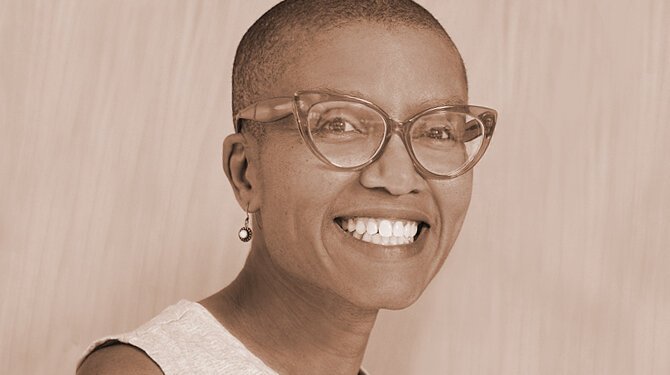SEED: Success Story
Winner – FORGE Product Development Grant

Empowering urban farmers to increase yields and sequester more carbon

“The housing authority won’t let us grow food on the balcony.” When SEED founder Sabrina Williams was a community organizer advocating for housing justice, people said things like this all the time. Food security was a huge issue for her clients, who often lived in food deserts and struggled to afford healthy groceries. So she started advocating for public housing residents’ rights to grow, helping launch a community garden in South Los Angeles and starting a food security nonprofit.
Williams encountered an Arduino-based automated irrigation system at a makerspace that inspired her to create her own irrigation system for the community garden. The system worked so well that she started looking for a grant to install more systems around the city. The only available grant sent her to Cuba. The system worked there too, but Williams still wanted to bring automated irrigation to LA. She had to find another way to fund it.
So, in 2019, she formed a benefit corporation, SEED. SEED’s primary beneficiaries are underserved, urban small-plot growers, usually people of color. The beneficiaries’ systems are subsidized by more affluent customers, who pay a higher price to irrigate their garden, backyard, or community farm.
SEED is branching out with another precision agriculture tool – Radicle, a soil carbon sensor. It measures soil health and carbon sequestration (how much carbon plants are absorbing from the atmosphere and storing in the ground). Growers can use data from the Radicle to decide whether they need to add fertilizer, change their growing techniques, or build raised beds.
“This is a tool anybody can use,” Williams said. “We want to turn millions of people into citizen scientists.”
FORGE’s impact
Williams built and tested a minimum viable product (MVP) version of the Radicle and SEED received a provisional patent for it. They were ready to turn it into an alpha prototype. That meant contracting an engineer. And engineers cost money.
SEED is a part of the Los Angeles Cleantech Incubator (LACI). Williams saw a post about FORGE’s Product Development Grant in the incubator’s Slack channel. The deadline was quickly approaching, so she almost ignored the post. Then she read the grant description.
“I thought, this is exactly what SEED is all about! How can I not apply?” she said. “‘Historically marginalized’ could mean me, as a leader, but it also means the folks SEED wants to impact the most – urban, underserved, low-income people, primarily Black, brown, indigenous, and immigrants.”
The Product Development Grant will help SEED turn the Radicle into prototypes for gardeners and farmers to test. Sometimes customers hesitate to add new tech to agriculture because they worry it’s not “natural.” Williams wants to change their minds.
“Technology isn’t coming into the environment to mess it up. It’s supporting your efforts to get your hands dirty,” Williams said. SEED works to make its tools safe for the environment through their whole lifespan. That means sourcing fair-trade materials and designing for durability and repairability. SEED is adding another layer of organizational transparency by becoming a certified B Corp.
“All along the way, we’re taking steps to make sure we don’t harm the communities we serve,” Williams said.
Looking ahead: Radicle growth
Once the Radicle is ready to hit the market, the ground’s the limit.
“Cleantech is all about intersections,” Williams said. “Housing, food security, pollution – they all go together.”
Soil data from the Radicle will help people fight food insecurity with more productive gardens, but also teach them how to sequester more carbon in the ground, so they can earn money in the carbon credit market. In addition to helping sequester carbon, SEED’s products also affect carbon emissions. When a community grows and trades its own food, they can rely less on imported produce. That means reducing emissions from flying veggies halfway across the world, keeping money in the community, and supporting each other. If you scale that to the 63 million residential and small gardens in the United States, those changes add up.
By the numbers
- Increased adoption of regenerative agriculture and soil health practices on U.S. cropland could sequester as much as 107 million metric tons of carbon in the soil
- During SEED’s irrigation pilot on four sites in Greater Los Angeles, farmers saved an estimated 350 thousand liters of water (equivalent to 8 residential swimming pools) and 382 metric tons of carbon (equivalent to 108 gas cars)
- SEED’s automated irrigation system increased food yields by over 30 percent during the pilot
- 45 million of the residential and small gardens in the U.S. are urban yards, schools and aggregated sites. If they all adopt regenerative soil practices, they can reduce greenhouse gas emissions by 11.5 million metric tons
